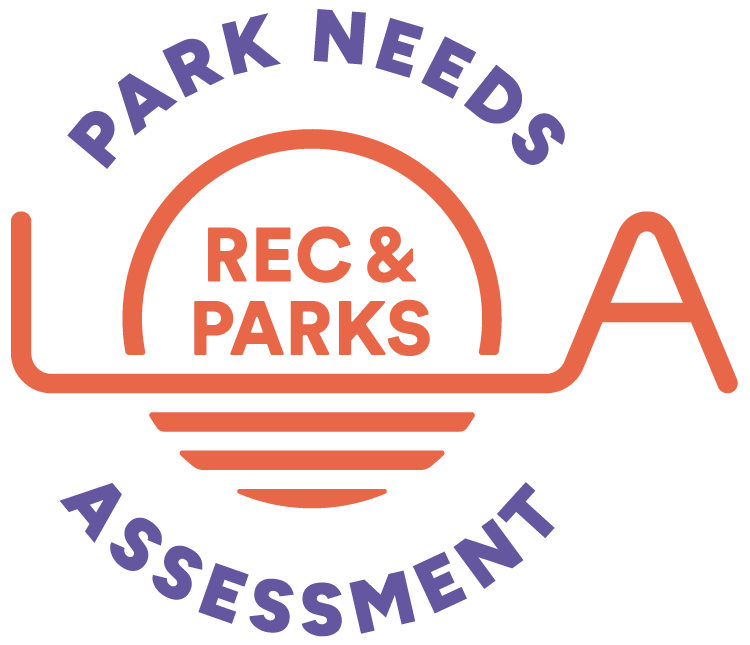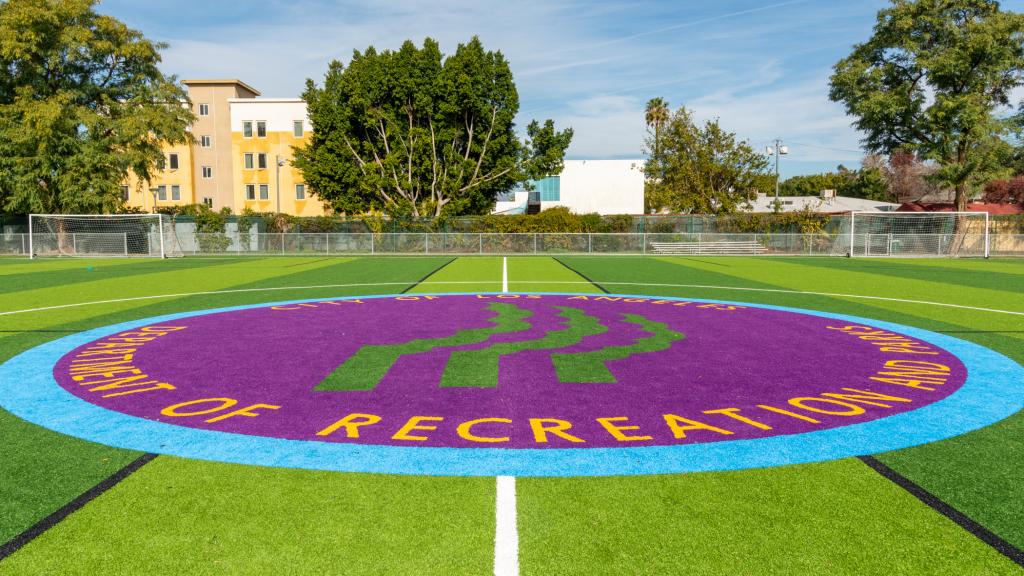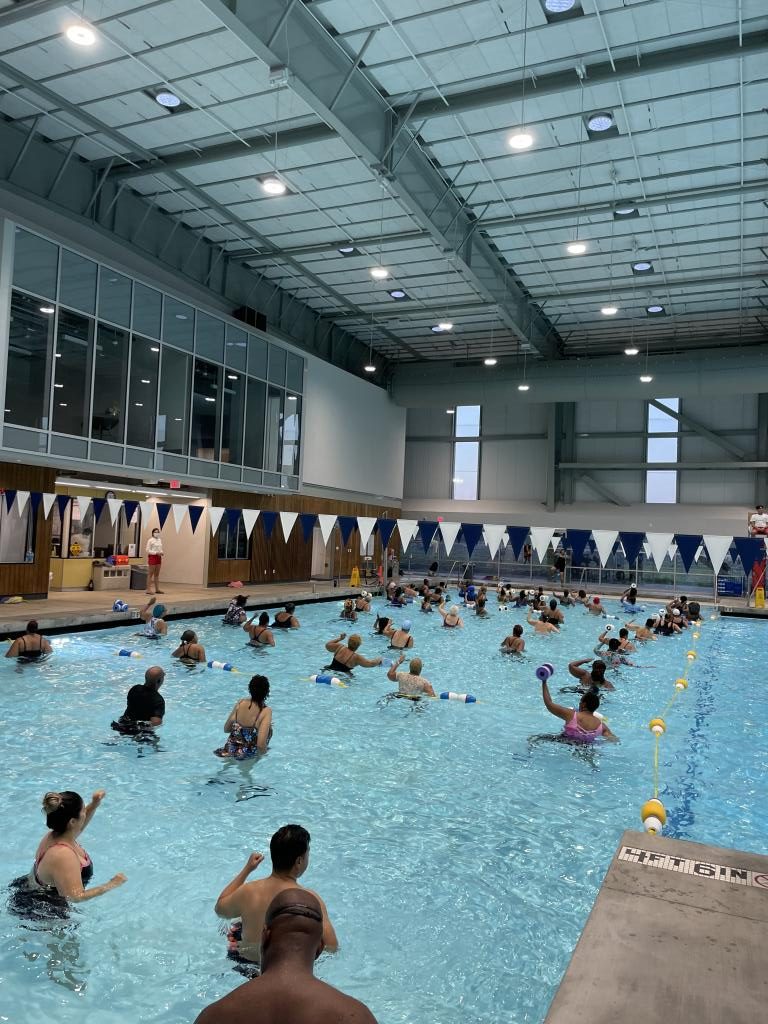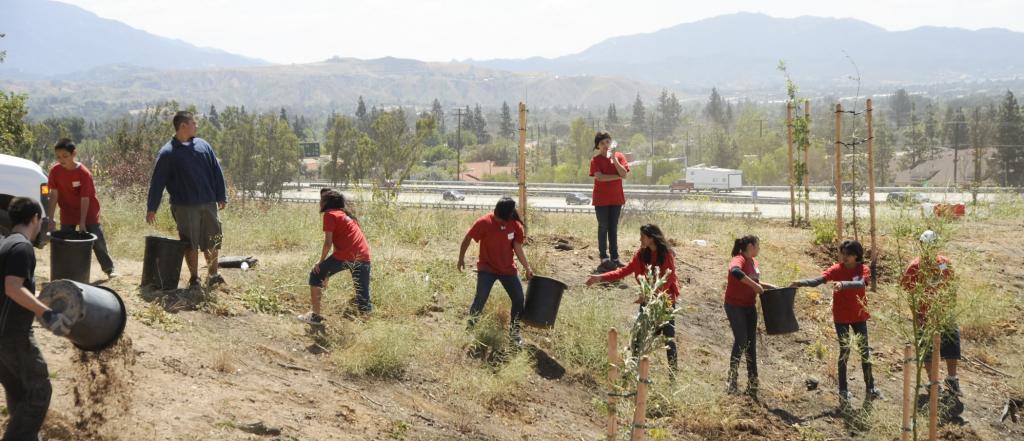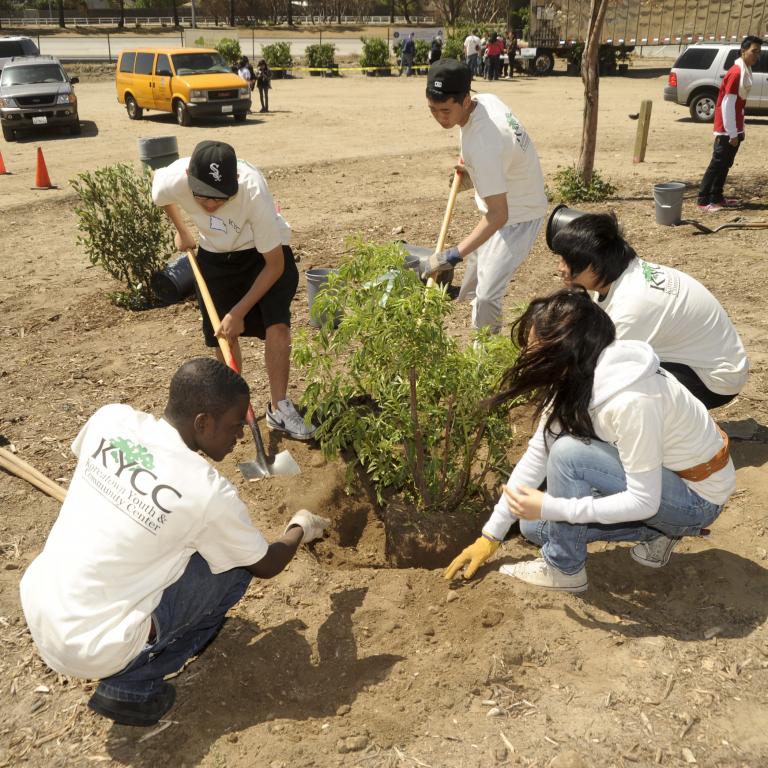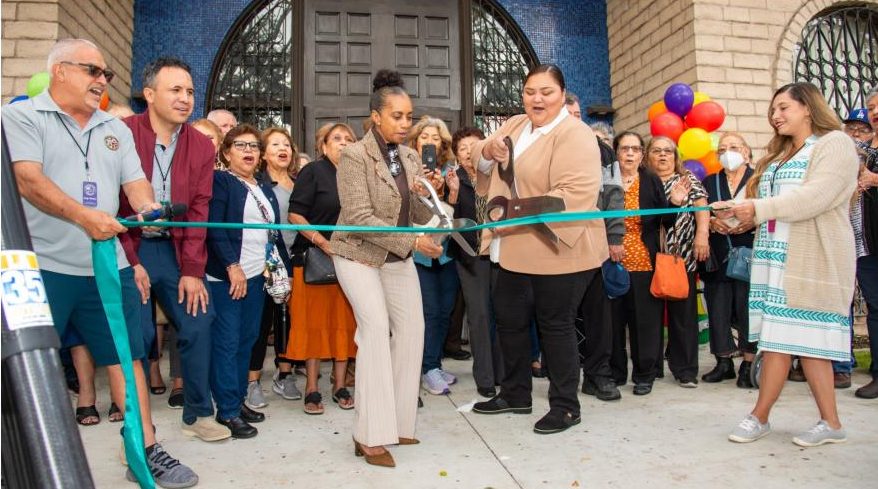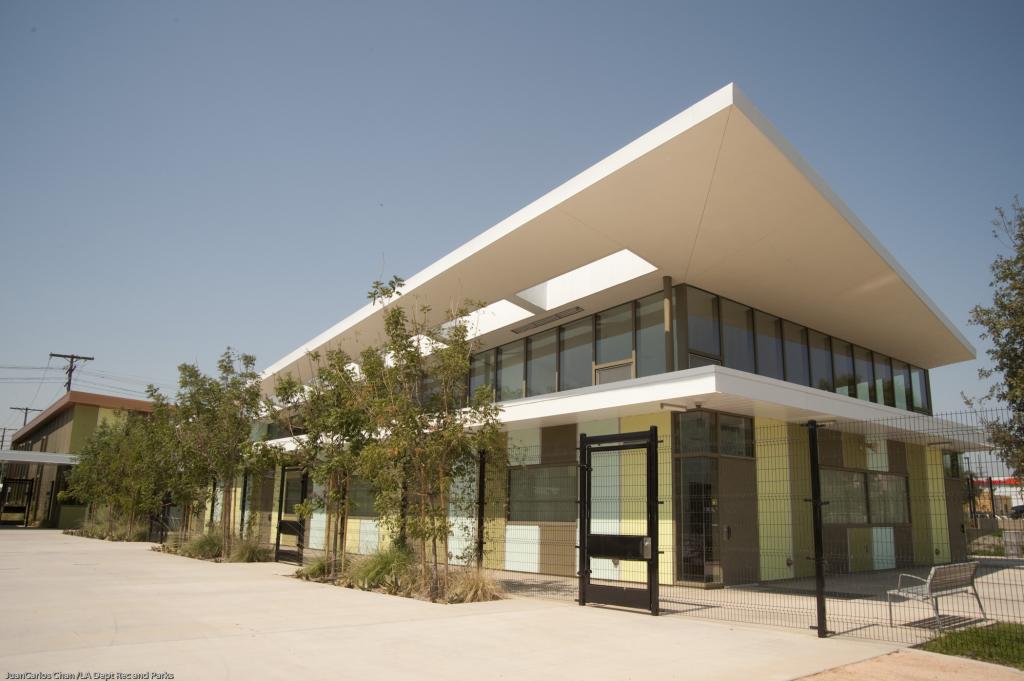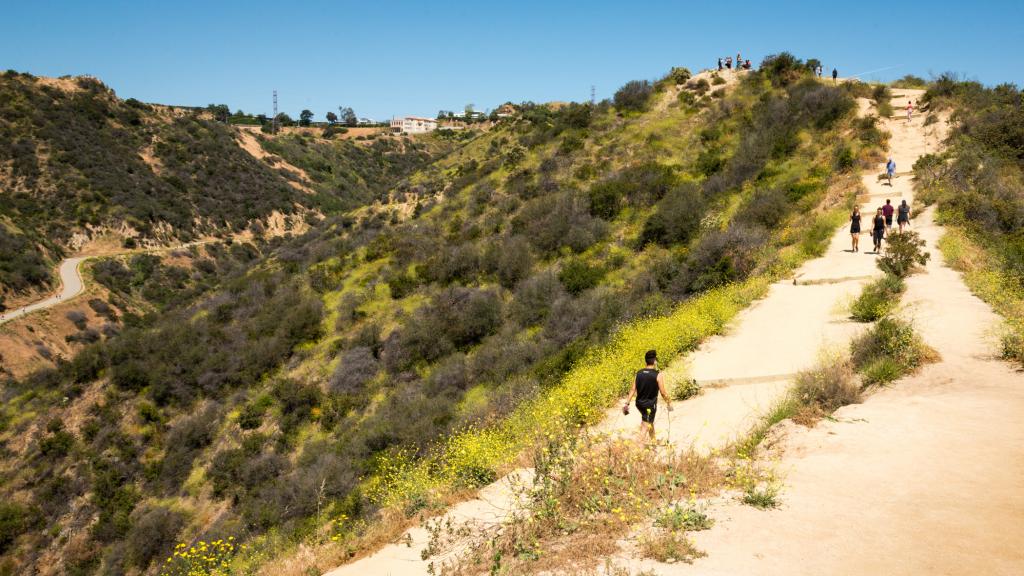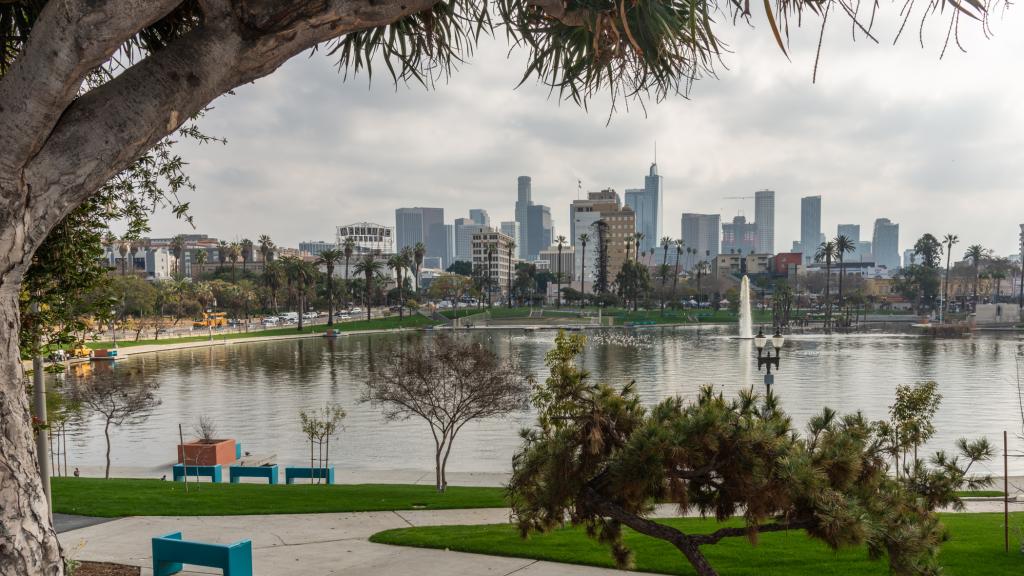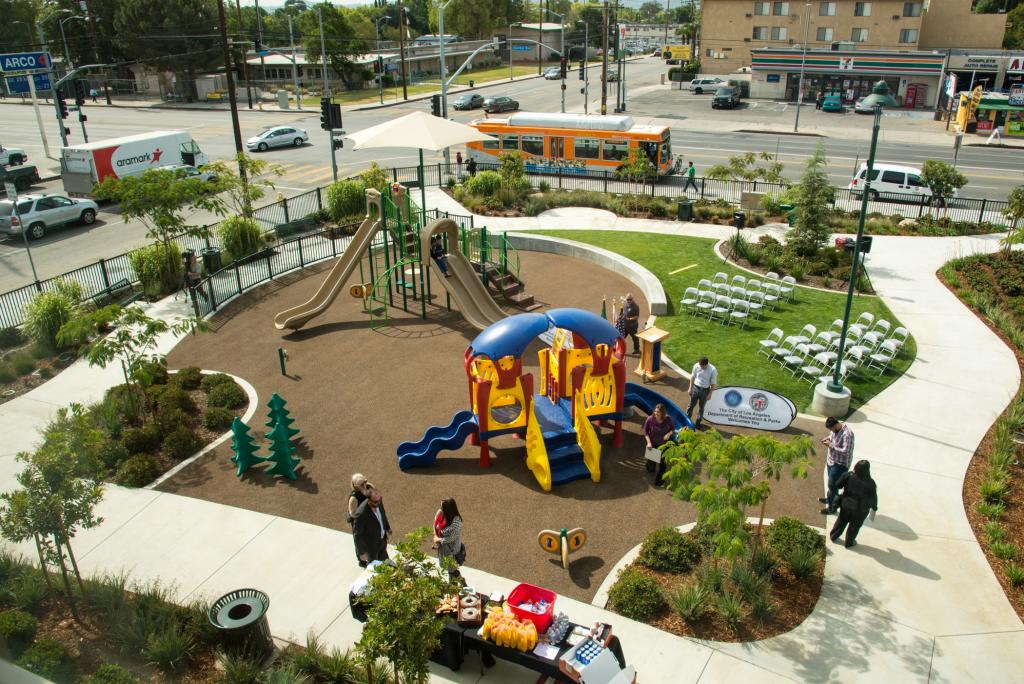As discussed on the Current Budget and Finance page, RAP achieves this with an increasingly constrained budget. Some parts of the City have limited park space that is seeing increased pressure as a result of new development. More funding is needed – now and in the years to come.
This section describes strategies that the City of Los Angeles and RAP could use to increase funding for its park system, some of which have not yet been tested. While RAP should remain attuned to state and federal funding sources, many of the following funding strategies are within the City’s, and even RAP’s, direct control. Strategies like building out an ecosystem of conservancies across the park system or evaluating opportunities to increase earned revenue take time to implement. The pursuit of additional funding, including the promising possibility of increasing revenue, should never compromise RAP’s fundamental mission of providing accessible recreation programs to all Angelenos.
The funding strategies explored in more detail below are:
| Funding Strategy | Applicable Use | |
|---|---|---|
| Capital | Operations and Maintenance |
|
| RAP-Led Funding Strategies | ||
| Increase earned-revenue generation | ||
| Expand partnerships with non-profits and build a conservancy model | ||
| Leverage State and Federal funding sources | ||
| Funding Strategies Requiring Partnership | ||
| Increase the Charter mandated allocation of the property tax revenue to RAP | ||
| Evaluate property tax assessments | ||
| Evaluate sales taxes | ||
| Evaluate City bond options: general obligation and revenue bonds | ||
RAP-Led Funding Strategies
Increase Earned-Revenue Generation
RAP can strengthen its financial sustainability by strategically reviewing and optimizing its existing revenue-generating programs, while remaining dedicated to the agency’s fundamental mission of providing accessible recreation programs to all Angelenos. Affordability and earned revenue are not necessarily in conflict, and programs that produce revenue can help support new and exciting recreational opportunities that reflect community interests. Reassessing RAP’s earned revenue could include conducting a market analysis that compares current fee structures, such as those for facility rentals, sports leagues, classes, or special events, with similar offerings provided by peer agencies and private providers in the region. If current rates are below those offered by peer institutions, particularly non-profit organizations with an interest in providing accessible services, there may be opportunities to adjust pricing while maintaining affordability and equitable access for residents.
RAP could also expand and diversify its revenue streams by collecting parking fees at new parks, improving and promoting concessions within the park system, or creating sponsorship opportunities for park maintenance or capital investment.
Parking
RAP could evaluate free and paid parking across the park system to identify locations for paid parking, particularly in high-traffic locations where free RAP managed parking sits adjacent to paid parking.
Concessions
In addition to reviewing pricing of existing concessions, RAP may consider new offerings. Creative examples of high demand concessions exist in urban park systems across the country. In Philadelphia each summer and fall, Parks on Tap attracts tens of thousands of residents to pop-up beer gardens across the city, generating vital revenue to support the city’s parks and offering a fun way for residents to explore new parks. Run by FCM Hospitality in partnership with Philadelphia Parks & Recreation and Fairmount Park Conservancy, Parks on Tap offers local craft beer, food, and vibrant social space within the city’s parks. The partnership allows Philadelphia Parks & Recreation to administer the program with limited staff effort. The program covers its own operating costs and generates thousands of dollars in revenue for the parks system. In the 2019 season alone, Parks on Tap generated $1.1 million in revenue. After covering program expenses, revenue supports trail improvements, tree plantings, signage, and free cultural events in parks with no direct investment from the city.1Tara Nurin, “With Permanent Pod Parks And Traveling Beer Gardens, Philadelphia Pioneers New Approaches To Placemaking,” Forbes, October 4, 2019.
Sponsorship
RAP could also work to attract more sponsors, though this may require amending current sponsorship guidelines to attract higher value investment. Currently, RAP places strict limits on how sponsors can be acknowledged within parks. In particular, RAP limits the duration that signage providing donor acknowledgment can remain in a park to 1 year for every $25,000 in giving.2Board of Recreation and Park Commissioners, City of Los Angeles Department of Recreation and Parks, “Board Report No. 22-146” June 02, 2022. This means that even large scale donations are only acknowledged for a short time, which may disincentivize major gifts from those who would like to see permanent recognition for themselves or a loved one. Major park systems including those in New York City, Pittsburgh, and Minneapolis allow more permanent recognition of donations at a lower threshold, encouraging a greater deal of public-private partnership to support city parks.
RAP CURRENTLY PLACES STRICT LIMITS ON HOW SPONSORS CAN BE ACKNOWLEDGED WITHIN PARKS.
Additionally, tight rules around signage and branding disincentivize partners from sponsoring season-long free programming to activate a park, which does happen in other places, as with Blue Cross and Blue Shield of Alabama sponsoring regular free fitness classes in Railroad Park in Birmingham, AL.3“Exercise classes: Get Healthy on the Railroad. Sponsored by Blue Cross Blue Shield of Alabama,” accessed July 23, 10125, https://railroadpark.org/programs/exercise-classes/.
ATTRACTING HIGHER VALUE SPONSORS MAY REQUIRE AMENDING CURRENT SPONSORSHIP GUIDELINES.
By investing in high-quality and in-demand programming, including outdoor fitness classes, nature camps, adaptive sports, and cultural events, RAP can continue to generate income while attracting broader community participation and supporting placemaking. Revenue gained through these efforts can be reinvested in park maintenance, staffing, and service enhancements, supporting long-term operational stability and improved park experiences. RAP is already engaged in this effort. From summer camps, to adult sports leagues, to venue rental permits, RAP is earning revenue to sustain the park system through exciting recreation amenities that communities love.
Expand Partnerships with Non-Profits and Build a Conservancy Model
Partnering with non-profits and growing a conservancy model can leverage philanthropic contributions to supplement public funding. These partnerships can provide targeted funding for specific parks, enhance programming, and introduce innovative stewardship models that improve park maintenance and community engagement. California has conservation organizations, such as the Mountains & Recreation Conservation Authority (MRCA) and the Santa Monica Mountains Conservancy, that are dedicated to forming partnerships to acquire, protect, and research open lands across the state. However, there is not a robust culture of private support for and stewardship of urban parks. Nationally, conservancies and friends groups are private organizations that fund capital improvements and regular maintenance in urban parks that have been effective at managing and funding major urban parks. These private entities can help reduce the financial burden on the city while fostering public-private collaboration to provide an increased level of programming and maintenance in some parks.
The level of involvement of a conservancy or friends group within a park system depends on the level of resources within the organization and the relationship they form with their park or park system entity. Friends groups and conservancies could be as small as a handful of motivated community members who organize quarterly planting and clean up days, or as large as a fully funded and well-resourced non-profit organization with a board of directors that facilitates regular maintenance of a park and capital improvements in conjunction with the public park agency. In these cases, a conservancy can serve as the primary steward of a park and allow the park agency to redistribute the funds and maintenance capacity that would have gone to the park to the rest of the park system. Regardless of size, since conservancies are volunteer or non-government partners, they are largely, if not entirely, insulated from public sector politics and changes, particularly annual budgets. Conservancies and friends groups rely on private sources for their budgets, including special assessments and philanthropy from foundations, corporations, and individuals. Budgets can vary widely, often impacted by the cultural significance of a park and the resources of the neighboring communities who use the park.
PARTNERSHIPS CAN PROVIDE TARGETED FUNDING FOR SPECIFIC PARKS, ENHANCE PROGRAMMING, AND INTRODUCE INNOVATIVE STEWARDSHIP MODELS.
New York City is one city that has leveraged private philanthropy and public interest to expand the capacity of the park system through conservancies. As of 2022, in addition to hundreds of volunteer groups, New York City had 24 conservancies with formal contractual agreements to provide some scale of stewardship services to the parks they were affiliated with.4NYC Parks, 2022 While two of these conservancies functioned citywide, most were park-specific, including the Central Park Conservancy, Prospect Park Alliance, Forest Park Trust, Friends of the High Line, and others. In 2023, the five conservancies with the greatest revenue and expenses generated more than $220 million of revenue to operate and maintain five parks above and beyond NYC Parks’ budget and role.5Annual reports and 990s of Brooklyn Bridge Park Corporation, Central Park, Friends of the High Line, Prospect Park Alliance, and Riverside Park Conservancy, 2023. For example, Central Park Conservancy raises more than $100 million annually to maintain and operate Central Park, removing the City’s burden to maintain one of New York’s most iconic cultural assets.6Central Park Conservancy, Annual Report 2025
A CONSERVANCY OR FRIENDS GROUP CAN SERVE AS AN IMPORTANT LONG TERM PARTNER IN PARK MAINTENANCE.
The Conservancy has contracted with the City to provide all necessary maintenance needs, programming, and capital projects within the park and is funded entirely by private capital and volunteer support. Since its founding in 1980, Central Park Conservancy has invested more than $1 billion into Central Park.7“Central Park Conservancy Governance,” accessed July 23,2025, https://www.centralparknyc.org/governance. While most conservancies are not as well-resourced as Central Park Conservancy and cannot take over all maintenance and capital needs of a park, a conservancy or friends group in almost any form can serve as an important long-term partner in park maintenance and an important way to generate care from the public for park assets.
Conservancies and friends groups are vital assets to a park system, but without an existing local model or culture of this type of support, it will take dedicated staff within RAP to work with interested community members to build the infrastructure for these organizations. Additionally, conservancies may receive community opposition if they are viewed as collecting private contributions to benefit only certain parks, say in wealthy, predominantly white communities, while other parks do not receive these additional resources, or if sponsored programming is geared towards wealthy donors rather than regular users.
This makes it doubly important to have internal infrastructure to support motivated residents in establishing a friends group who may not have the funds, resources, or experience to independently do so, and to work with conservancies to ensure their contributions serve the full diversity of park users. This provides a better chance that communities across the city, no matter their socioeconomic status, have a chance to create non-government organizations to support their beloved neighborhood parks. In addition, RAP must be clear in messaging that conservancies relieve pressure on a parks system with limited funding by freeing up funds and maintenance resources for other parks rather than adding outside resources to an outsized share of public funds.
IT WILL TAKE DEDICATED STAFF WITHIN RAP TO WORK WITH EXCITED COMMUNITY MEMBERS TO BUILD THE INFRASTRUCTURE FOR CONSERVANCIES AND FRIENDS GROUPS.
Leverage State and Federal Funding Sources
Tapping into state and federal funding, most often available for capital projects, can reduce pressure on the City to fund vital and expensive capital improvements through a parks budget that already struggles to support regular operational needs. State and federal grants often prioritize goals such as climate resilience, public health, and equity—all areas where RAP already has a strong impact. By aligning necessary capital projects under key state and federal priorities, RAP can secure additional resources to enhance facilities, expand access, and address underserved community needs. And despite a shifting climate around federal spending, California has a variety of state resources that remain active in supporting parks, open space, and recreation.
In California, Measure W and Proposition 4 are both key sources of capital that align with RAP’s mission. Measure W, passed by Los Angeles County voters in 2018, created the Safe, Clean Water Program by establishing a parcel tax of 2.5 cents per square foot of impermeable surface on private properties to fund stormwater capture and water quality projects across the county.8Los Angeles County Public Works,”Safe Clean Water LA,” accessed July 23, 2025, https://dpw.lacounty.gov/wp/safecleanwaterla/about/faq/ The measure generates approximately $280 million annually to fund stormwater capture, water quality improvements, and local water supply projects, and prioritizes investments that support community benefits like green space, habitat restoration, and climate resilience.9Ibid. These funding streams are well aligned with necessary green infrastructure projects within the Los Angeles park system.
RAP has a similar opportunity to embrace aligned goals with California Proposition 4. Approved by California voters in 2024, Proposition 4 led to the state issuing a $10 billion general obligation bond that funds climate resilience, water infrastructure, wildfire prevention, and environmental protection projects across the state. This includes $3.8 billion for safe drinking water, stormwater capture, drought preparedness, and flood control; $1.5 billion for wildfire prevention and forest health; and $1.2 billion for sea-level rise and coastal adaptation.10San Francisco Bay Area Planning and Urban Research Association, “CA Prop 4 Climate Bond,” accessed July 23 2024, https://www.spur.org/voter-guide/2024-11/ca-prop-4-climate-bond. Importantly for RAP, it allocates over $1 billion to projects aimed at enhancing recreational opportunities, preserving and protecting open space, and reducing extreme heat through increased plantings and other interventions—all important areas of capital need for the LA park system.11Ibid.
FEDERAL GRANTS OFTEN PRIORITIZE GOALS SUCH AS CLIMATE RESILIENCE, PUBLIC HEALTH, AND EQUITY, AREAS WHERE PARKS HAVE A STRONG IMPACT.
FUNDING STRATEGIES REQUIRING PARTNERSHIP
Increase the Charter Mandated Allocation of Property Tax Revenue to RAP
The property tax revenue allocated to RAP under the City Charter comprises the largest share of revenue to RAP’s annual operating budget ($278 million out of $348 million in FY2025). The charter’s current allocation rate for RAP is 0.0325% of the assessed value of all property in the city.12Los Angeles Charter and Administrative Code, “ Sec. 593. Financial Support,” accessed July 23, 2025, https://codelibrary.amlegal.com/codes/los_angeles/latest/laac/0-0-0-2833. However, a charter amendment could increase this allocation.
In Los Angeles, property tax allocations to certain City agencies such as RAP and the Library Department are determined by fixed formulas in the City Charter which allocate a set percentage of assessed property tax revenue each year. These charter-based allocations are automatic and not subject to annual budget negotiations. Even as the State changed the property tax assessment ratio in the late 1970’s, RAP’s relative allocation in the City Charter remained constant.13Note: In 1979 California voters approved Proposition 3, which changed the assessment ratio used across the state to compute property taxes from 25% of market value to 100%. To account for this change and ensure the total allocation to agencies required in the charter would not quadruple in line with the new tax assessment ratio, the City Charter was amended to decrease the allocation share for RAP and other agencies to a quarter of what it had been, which in RAP’s case changed the rate from 0.13% to 0.0325%. This meant that even though the technical calculation of assessed value changed, departments continued to receive the same effective share of property tax revenue they were guaranteed under the original formulas.
In 1978, Proposition 13 capped property taxes at 1% of a property’s assessed value and limited annual increases in assessed value to 2% unless the property is sold or significantly improved.14Ballotpedia, “California Proposition 13,” accessed July 23, 2025, https://ballotpedia.org/California_Proposition_13,_Tax_Limitations_Initiative_(June_1978). Since many homes in Los Angeles are occupied by long-term owners, this means tax revenue—and therefore, RAP’s allocation—has not kept pace with increases in market value, let alone the pressure from a growing population, a growing park system, and increasing labor costs. However, the City could work to amend the charter to increase RAP’s annual funding allocation.
An increased charter-mandated allocation to RAP would increase tax revenue to operate and maintain Los Angeles’ park system and help RAP better align revenue, albeit marginally, with rising inflation and housing values in the city. A proposed amendment would either need signatures from 15% of Los Angeles registered voters or support from two-thirds of the City Council to be put on the ballot for public approval. Once on the ballot, a simple majority of voters would be required to pass the measure.
AN INCREASE TO THE CITY’S CHARTER MANDATED ALLOCATION RATE WOULD INCREASE TAX REVENUE TO OPERATE AND MAINTAIN LOS ANGELES’ PARK SYSTEM.
There is recent precedent for a charter amendment. In 2011, LA voters approved a City Charter amendment that increased the Los Angeles Public Library’s guaranteed allocation from 0.0175% to 0.03% of assessed city property value.15Los Angeles Office of the City Clerk, “Inter-departmental correspondence: Fiscal Impact Of Proposed Charter Amendment For Library Funding,” November 16, 2010. Known as Measure L, this amendment was phased in over four years through fiscal year 2015, resulting in a roughly 70% increase in the library’s budget and restoring six‑day‑a‑week operations across branches.16Brianna Lee. “Voters shape the LA city budget, too — here’s how,” LAist, May 13, 2025. RAP could work with the City or advocacy groups to propose an increased allocation from the City Charter to increase vital funds for park system operations.
Evaluate a New Property Tax Assessment
A voter-approved special assessment on property taxes can provide a dedicated revenue stream for park improvements, new developments, and maintenance on affiliated capital projects. For the last 30 years, the City of Los Angeles has successfully leveraged Proposition K to allocate millions of dollars annually towards capital improvements within the city’s parks. Proposition K was approved by Los Angeles registered voters in 1996 and created the “L.A. for Kids Program.” It established a 30-year property assessment district to generate up to $25 million annually to fund capital development, acquisition, and improvement of parks and recreational facilities for youth across the city.17City of Los Angeles Bureau of Engineering, “About Us,” accessed July 23, 2025, https://engineering.lacity.gov/about-us/divisions/recreation-and-cultural-facilities/about-us. Assessments are based on a system of benefit points defined in the City Engineer’s Report referenced in the referendum.18Engineer’s Report for the City of Los Angeles, Landscape and Lighting District No. 96-1, 1996. The vast majority of that funding, 82%, is reserved for parkland acquisition and capital projects.19City of Los Angeles Bureau of Engineering, “Referendum Ordinance K Proposed Referendum Ordinance for City-Wide Parks, Recreation And Community Facilities Assessment,“ November 5, 1996. A smaller share, 15%, is allocated to maintenance of completed Proposition K-funded projects, and 3% can be allocated to associated administrative costs. Proposition K is managed by the L.A. for Kids Steering Committee and administered by the Bureau of Engineering. It has funded both a set of pre-determined projects laid out in the original legislation as well as competitive grant cycles, with funding scheduled through fiscal year 2027. With Proposition K set to expire in the coming years, RAP faces the prospect of losing $25 million of annual funding that supports critical site improvements and new capital projects—a significant financial “cliff” if no other funding measure replaces it.
WITH PROPOSITION K SET TO EXPIRE IN FISCAL YEAR 26/27, THE CITY AND ADVOCATES MUST BUILD POLITICAL WILL TO PASS A SUCCESSOR.
Community Facilities District
One strategy for establishing special property tax assessments in service of public infrastructure is through a Mello-Roos Community Facilities District (CFD). A CFD is a special district established by a local government in California to finance public infrastructure and services such as schools, parks, streets, and emergency services. Authorized under the 1982 Mello-Roos Act, CFDs allow localities to levy a special tax on properties within a designated area after being approved by two-thirds of registered voters located within the District. Mello-Roos taxes are separate charges on property tax bills, often funding long-term bond repayments. CFDs are most useful at a small scale for defined infrastructure needs and not typically used for citywide needs.
Evaluate Sales Taxes
Voter-approved sales taxes are a powerful tool for expanding a park agency’s revenue base because they establish a dedicated, long-term funding stream that is less vulnerable to economic fluctuations or shifting political priorities. By securing a portion of local tax revenue, RAP could move beyond limited general fund allocations and gain greater financial stability to support capital improvements and operating costs such as staffing, maintenance, and programming. However, sales taxes are inherently regressive in that they impact the lowest income residents at the same rate as the wealthiest residents without any scale to distribute contributions by means. For that reason, sales taxes should be considered a tool, but not a primary tool, to diversify revenue for RAP.
Because they require voter approval, sales taxes are most successful when they have community buy-in and clear goals that prioritize underserved areas, sustainability, or other key issues. In Los Angeles, a ballot measure on special sales taxes can be brought to voters for approval either by a government body like the City Council or by the public. If a ballot measure is government-led, a two-third majority of registered voters is needed to pass the measure. If citizen-led, only a simple majority of voters is needed (50% + 1).
Measure A, passed by Los Angeles County voters in 2024, is a permanent half-cent sales tax that generates approximately $1 billion annually to fund homeless services, affordable housing, mental health care, rental assistance, and prevention programs.20County of Los Angeles Homeless Initiative, “The Facts About Measure A,” , November 14 2024, https://homeless.lacounty.gov/news/the-facts-about-measure-a/. It replaces Measure H, a 2017 voter-approved quarter-cent sales tax that raised about $355 million per year to support homeless services and was set to expire in 2027.21Doug Smith, “Your guide to Measure A: Sales tax to fund homelessness programs,” Los Angeles Times, October 3, 2024.22County of Los Angeles Homeless Initiative, “Measure H Year-One Report Card,” August 30, 2018, https://homeless.lacounty.gov/news/measure-h-year-one-report-card/. Measure A expands both the funding amount and scope, ensuring continued support for key programs with new accountability measures, including five-year performance goals and the ability to withhold funding from underperforming initiatives. A citizen-led initiative, Measure A was approved by 57.8% of voters.23Los Angeles County Registrar,”LA County Election Results , General Election, November 5, 2024, https://results.lavote.gov/#year=2024&election=4324.
Evaluate City Bond Options
Issuing municipal bonds allows the City to secure large-scale financing upfront for capital projects, which can then be repaid over time through designated revenue sources. Bonds are an important avenue to finance a well-defined, clear slate of projects. Bonds are particularly useful for capital-intensive projects such as acquiring new parkland, major facility renovations, or climate resilience initiatives. Municipal bonds are primarily issued as either general obligation (GO) bonds or revenue bonds, each with distinct repayment sources and approval requirements. In Los Angeles, both types of bonds are used to finance public infrastructure, with GO bonds offering greater security and revenue bonds offering more flexibility for self-sustaining projects.
GO bonds are backed by the full faith and credit of the City, meaning they are repaid through general tax revenues, most often property taxes. Because they represent a claim on public tax dollars, GO bonds require a two-thirds majority approval by registered voters to enact. They are commonly used to fund projects that benefit the public broadly, such as schools, libraries, and, for RAP, parks and park infrastructure.
Revenue bonds are repaid solely from the income generated by the project they finance. This might include tolls from a bridge, fees from a parking garage, or revenues from a water utility. In a park context, a revenue bond could be used to build improved parking infrastructure at a popular beach or recreation destination, or to build a ticketed amphitheater within a park. In both cases, the park amenity would need to generate revenue to repay the bond. Revenue bonds do not require voter approval because they are not backed by taxes, but they carry greater financial risk since repayment depends on the project’s success.
BONDS ARE PARTICULARLY USEFUL FOR CAPITAL-INTENSIVE PROJECTS SUCH AS ACQUIRING NEW PARKLAND, MAJOR FACILITY RENOVATIONS, OR CLIMATE RESILIENCE INITIATIVES.
RAP would not be the first cultural or recreation institution in LA to use bonds to fund necessary capital improvements. In 1998, Los Angeles voters approved Proposition CC, a GO bond measure that allocated $47.6 million to revitalize the L.A. Zoo’s infrastructure and exhibits.24City of Los Angeles, “Special Election, Consolidated With California State General Election,” November 3, 1998, https://ens.lacity.org/clk/elections/ND4469.htm. This financing, combined with additional funding through the Greater Los Angeles Zoo Association and other groups helped finance major capital investments including a new Animal Health Center, the Winnick Family Children’s Zoo, the Children’s Discovery Center, and more, bringing the total investment under the 1992 Los Angeles Zoo Master Plan to around $172 million.25City of Los Angeles Bureau of Engineering, “Los Angeles Zoo Bond & Capital Improvement Program,” accessed July 23, 2025, https://engineering.lacity.gov/zoo. This investment helped the L.A. Zoo improve both animal welfare and the visitor experience and maintain its presence as an important cultural and tourist destination for the region.
Between 2004 and 2007, the Los Angeles County Museum of Art (LACMA) issued a series of tax-exempt revenue bonds through the California Infrastructure and Economic Development Bank (Ibank) to fund major campus infrastructure improvements.26California Infrastructure And Economic Development Bank (Ibank), Staff Report Executive Summary, 2020. The 2004 A&B bonds financed the construction of a new museum building, upgrades to existing facilities including the Ahmanson Building, a new central heating and cooling plant, and improved walkways and landscaping. The 2004C bonds supported the demolition of an above-ground parking garage and construction of a two-level underground replacement. Finally, the 2007 bonds funded the design and construction of a new exhibition pavilion, expansion of education and gallery spaces, outdoor art installations, and the acquisition of five adjacent properties. These projects significantly modernized and expanded LACMA’s physical campus.
Sources
- 1Tara Nurin, “With Permanent Pod Parks And Traveling Beer Gardens, Philadelphia Pioneers New Approaches To Placemaking,” Forbes, October 4, 2019.
- 2Board of Recreation and Park Commissioners, City of Los Angeles Department of Recreation and Parks, “Board Report No. 22-146” June 02, 2022.
- 3“Exercise classes: Get Healthy on the Railroad. Sponsored by Blue Cross Blue Shield of Alabama,” accessed July 23, 10125, https://railroadpark.org/programs/exercise-classes/.
- 4NYC Parks, 2022
- 5Annual reports and 990s of Brooklyn Bridge Park Corporation, Central Park, Friends of the High Line, Prospect Park Alliance, and Riverside Park Conservancy, 2023.
- 6Central Park Conservancy, Annual Report 2025
- 7“Central Park Conservancy Governance,” accessed July 23,2025, https://www.centralparknyc.org/governance.
- 8Los Angeles County Public Works,”Safe Clean Water LA,” accessed July 23, 2025, https://dpw.lacounty.gov/wp/safecleanwaterla/about/faq/
- 9Ibid.
- 10San Francisco Bay Area Planning and Urban Research Association, “CA Prop 4 Climate Bond,” accessed July 23 2024, https://www.spur.org/voter-guide/2024-11/ca-prop-4-climate-bond.
- 11Ibid.
- 12Los Angeles Charter and Administrative Code, “ Sec. 593. Financial Support,” accessed July 23, 2025, https://codelibrary.amlegal.com/codes/los_angeles/latest/laac/0-0-0-2833.
- 13Note: In 1979 California voters approved Proposition 3, which changed the assessment ratio used across the state to compute property taxes from 25% of market value to 100%. To account for this change and ensure the total allocation to agencies required in the charter would not quadruple in line with the new tax assessment ratio, the City Charter was amended to decrease the allocation share for RAP and other agencies to a quarter of what it had been, which in RAP’s case changed the rate from 0.13% to 0.0325%. This meant that even though the technical calculation of assessed value changed, departments continued to receive the same effective share of property tax revenue they were guaranteed under the original formulas.
- 14Ballotpedia, “California Proposition 13,” accessed July 23, 2025, https://ballotpedia.org/California_Proposition_13,_Tax_Limitations_Initiative_(June_1978).
- 15Los Angeles Office of the City Clerk, “Inter-departmental correspondence: Fiscal Impact Of Proposed Charter Amendment For Library Funding,” November 16, 2010.
- 16Brianna Lee. “Voters shape the LA city budget, too — here’s how,” LAist, May 13, 2025.
- 17City of Los Angeles Bureau of Engineering, “About Us,” accessed July 23, 2025, https://engineering.lacity.gov/about-us/divisions/recreation-and-cultural-facilities/about-us.
- 18Engineer’s Report for the City of Los Angeles, Landscape and Lighting District No. 96-1, 1996.
- 19City of Los Angeles Bureau of Engineering, “Referendum Ordinance K Proposed Referendum Ordinance for City-Wide Parks, Recreation And Community Facilities Assessment,“ November 5, 1996.
- 20County of Los Angeles Homeless Initiative, “The Facts About Measure A,” , November 14 2024, https://homeless.lacounty.gov/news/the-facts-about-measure-a/.
- 21Doug Smith, “Your guide to Measure A: Sales tax to fund homelessness programs,” Los Angeles Times, October 3, 2024.
- 22County of Los Angeles Homeless Initiative, “Measure H Year-One Report Card,” August 30, 2018, https://homeless.lacounty.gov/news/measure-h-year-one-report-card/
- 23Los Angeles County Registrar,”LA County Election Results , General Election, November 5, 2024, https://results.lavote.gov/#year=2024&election=4324.
- 24City of Los Angeles, “Special Election, Consolidated With California State General Election,” November 3, 1998, https://ens.lacity.org/clk/elections/ND4469.htm.
- 25City of Los Angeles Bureau of Engineering, “Los Angeles Zoo Bond & Capital Improvement Program,” accessed July 23, 2025, https://engineering.lacity.gov/zoo.
- 26California Infrastructure And Economic Development Bank (Ibank), Staff Report Executive Summary, 2020.
